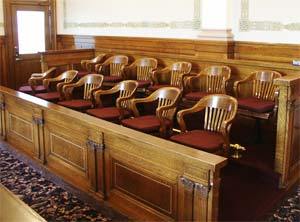Local Government Spending
Every local government has to decide how to direct general expenditures. Education and police top the list, followed by healthcare, transportation, and roads. An issue that all state and local governments are currently facing is a substantial projected budget shortfall in revenue because of closures due to COVID19.
State and local governments spent $193 billion on law enforcement and corrections in 2017. Local governments were responsible for $129 billion, or two-thirds of that spending. Law enforcement spending ranks behind education ($684 billion) as the second-largest spending category for local government budgets.

According to USA Facts, governments in America’s largest counties tend to spend more money per capita on law enforcement than smaller counties, according to data compiled by the US Census Bureau.
Local governments spent on average $340 per person on law enforcement in 2017. That represents 9.2% of all spending, but priorities differ in counties of varying sizes and demographics.
The 9.2% of all local government spending is a fifth of what’s spent locally on education (48.6% of spending or $2,106 per person). It’s also more than twice that of public health (4% or $174 per person).
In the 25 most populous counties, local governments spent $573 per resident on law enforcement – which includes both police services and corrections. In the next 303 most populous counties, all with at least 200,000 residents, law enforcement spending stood at $388 per person.
For the next largest state expenditure, public education, spending per pupil ranges from $7,486 in Idaho to $23,091 In New York, the highest tally of any state, followed by the District of Columbia, Connecticut, New Jersey, and Vermont.
Local governments spend far more of their budgets directly on elementary and secondary education than states. In 2017, 40% of local direct general spending went to elementary and secondary education compared with less than 1% of state direct spending.
Only in Alaska, Hawaii, Kentucky, and New Jersey did state governments deliver 5% or more of direct K–12 spending. Hawaii was an outlier because the Hawaii State Department of Education operates public schools and thus 100 percent of its direct educational spending occurred at the state level.
Overall, the United States spent $13,025 per pupil in 2017. Among the states, New York spent the most per pupil ($25,288), followed by Wyoming ($20,255), New Jersey ($19,364), and Vermont ($18,755). These states also generally had the most per capita spending in 2017.
One of the next highest direct general expenditures is in healthcare. In 2017, state and local governments spent $294 billion, or 10% of direct general spending, on health and hospitals. Health and hospitals combined were the fourth-largest source of state and local direct general spending in 2017 and roughly equal to higher education expenditures. And in 2017, 66% of health and hospital spending went to hospital services and 34% went to other health programs.
According to a Pew Research report on federal data released since the pandemic, education jobs have accounted for nearly two-thirds of the decline in state and local government employment. It is not known how this will recover when school starts again in late summer. Nationally, local education employment has declined by more than 9% since March.
As local governments face substantial projected budget shortfall in revenue because of closures due to COVID19, AV Capture All provides affordable tools for city councils and municipal courts to live stream meetings, keep agendas organized and help citizens stay engaged. Click here to request a quote and demo.
Source: Urban Institute and usafacts.org



